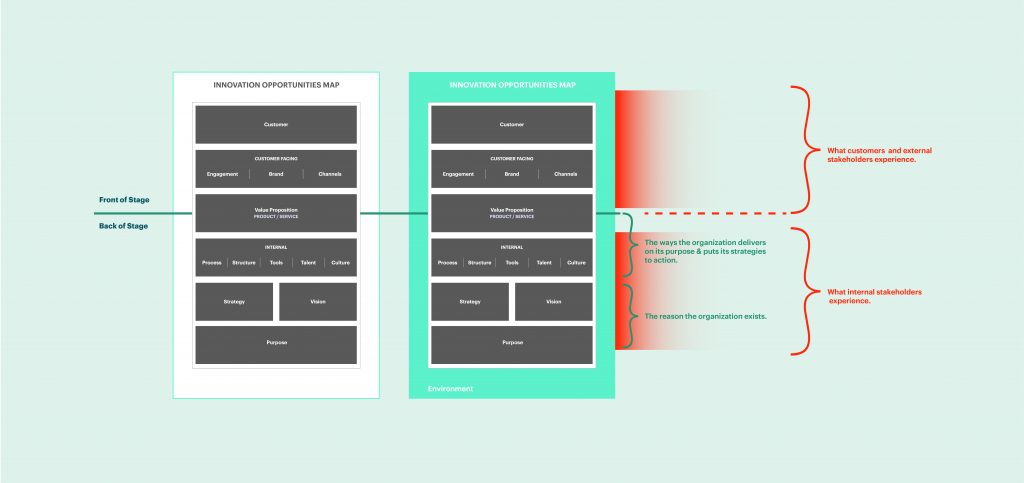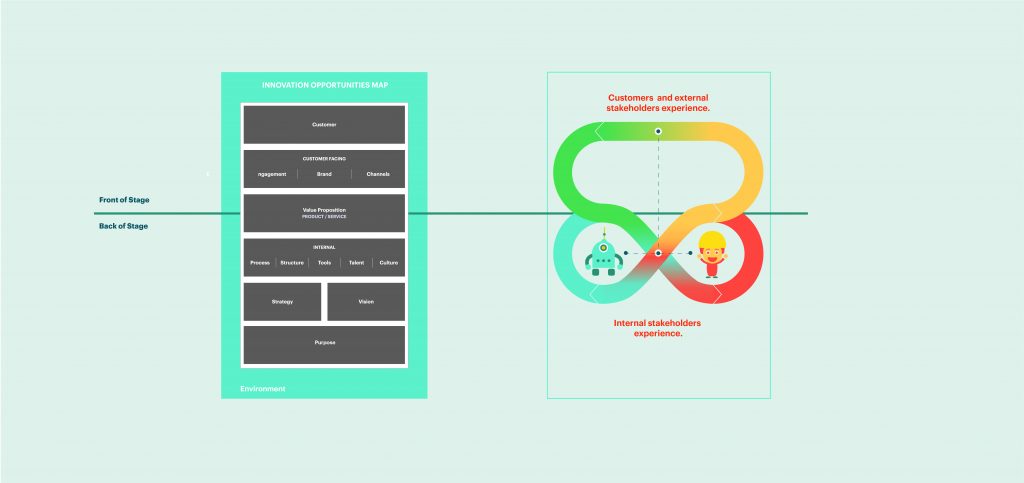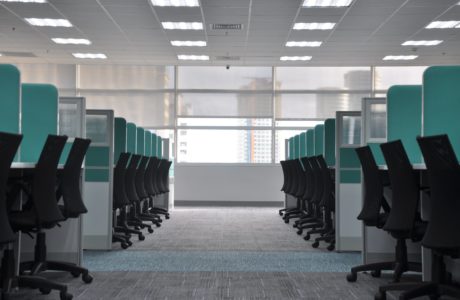The radical disruption of work – as a catalyst for and as a result of change – has profound systemic and social implications.
We are witnessing and participating in a fundamental transformation in the way we organize and work. Automation, Artificial Intelligence, and Machine Learning are changing the nature of tasks and jobs, and therefore the skills organizations seek in people and talent. Beyond the skills (and related hiring, upskilling, and retention plans), these significant changes raise enormous organizational challenges. Strategies, structures, processes, and organizational cultures are now wrestling with unparalleled disruptions, and economic and societal shifts.
While organizations have become more conscious of addressing emergent trends and human-centered needs and including them in strategic planning, the main focus remains on incremental innovation — little is invested in an innovation portfolio approach. Therefore, the share of transformational projects is a far cry from what’s needed.
Within the increasing interest in innovation, and the often aggressive demand for innovation design projects focused on immediate wins across industries, lies an opportunity to bring to light the importance of understanding innovation as a system, the Innovation System, and the environment around it. This system works like Russian nesting dolls, in that it requires a continuous dive and ascent movement. Additionally, a change to one layer of the system triggers changes in all the others. This continuous and transformational work may seem daunting for most organizations. The Future of Work, with all the attention it is getting, may be the Trojan Horse to create more in-depth conversations and to nudge the required transformational innovation work forward.
As Innovation Designers at The Moment we design and facilitate relationships and experiences across organizations and beyond, to enable service delivery and product development, and to create value for stakeholders within and outside of those organizations. We partner with teams across departments to improve customer and employee experiences, incubate new products and services, and cultivate a human-centered design culture and innovation capability internally. This work requires a systemic understanding of the organization as a whole and the environment in which it operates. We use our Innovation Opportunities Map to place the different types of innovation work within the context of how the firm creates value for customers and employees. However, some of the biggest disruptive implications will extend beyond the organization itself. Organizations are a fundamental component of our economic systems, societies, and human experiences. The radical disruption of work – as a catalyst for and result of change – has profound systemic and social implications.
‘The radical disruption of work – as a catalyst for and result of change – has profound systemic and social implications.’

Let’s start with the environment.
If we look at the primary forces behind the anticipated major shifts in supply chain, consumption, work, etc., we realize that although it’s in the spotlight, technology is not the sole driver. While automation, AI, and robotics are some of the technologies that are constantly and fundamentally shaping and reshaping the future of work and society, so too are globalization and demographic shifts. We live in a world where these drivers are giving rise to major disruptions on multiple platforms such as mobility, healthcare, urbanization, and work. Governments, industries, and society in all its dimensions are being impacted by climate change and the development of alternative resources, data, and the proliferation of smart tech, digital platforms, and the impact of the customer’s voice.
Exploring and understanding these megatrends and shifts in the environment gives companies the power to understand the changing nature of the landscape, and to build strategies to both adapt to and shape the future. It also enables organizations to craft a clear and meaningful purpose to stay relevant for the future ahead.
Let’s talk about innovation strategies.
At its core, strategy is the way in which organizations pursue and deliver on their purpose. Often innovation strategies provide a roadmap for leadership to frame & present innovation in the wider context of the organization. Beyond short term business strategies, innovation strategies should answer some key questions:
- What is the organization’s vision of the future?
- What are the trends and shifts in the market that are impacting the industry – or will be in the future?
- Most importantly, what is the plan to respond to change and get ahead of the curve?
Without this strategic roadmap, it is often difficult for organizations to know ‘where to play’ or even ‘how to play’.
As organizations reflect on their own vision, values & purpose, a robust innovation strategy will bring change to the internal systems and redirect internal investments in ways that help mitigate both anticipated and unknown changes to the environment, making the firm more resilient & future ready.
Now, let’s talk about the humans.
As we shift to an AI world, the customer and employee experiences are drastically changing. Organizations have a critical role in designing the customer interactions with their products and services, but also in designing the relationship between humans and machines in the workplace. Collaboration between the workers and AI can make or break the organization of the future. A human-centered innovation approach and new internal systems will need to facilitate a symbiotic relationship in which machine and human systems can build upon one another, elevating the potential of both parties to new heights.
What the future of work discourse presents is mainly an opportunity to challenge our mindsets about the roles of work and the organization as we know them today. Without getting caught up in the frightening headlines of the day, we believe that organizations are faced with the immediate need to rethink what value they bring to the world and how they deliver that value. Environmental drivers, including technology, are creating unprecedented possibilities. To take advantage of this potential, firms must consider their internal systems. Are their tools, processes, talent & culture supportive of their innovation strategy & the humans who enact it? How might workplaces create the future they’re envisioning?

Like Russian nesting dolls, Innovation work requires a continuous dive and ascent movement. Organizations aiming to make the leap into the future must create time and space for future explorations to happen, focus on what value they bring to the world and how they deliver it, and place equal importance on both the social and economic impact they create inside the organization and in the world. Although no exploration of the future will ever be conclusive, having a clear sense of purpose grounded in human-centered principles will set your innovation efforts to thrive in the future by fostering meaningful experiences for customers and workers.
‘Although no exploration of the future will ever be conclusive, having a clear sense of purpose grounded in human-centered principles will set your innovation efforts to thrive in the future by fostering meaningful experiences for customers and workers.’
The Future of Work(ers) Event, January 2019.
We previously hosted an event in partnership with DesignTO Future of Work(ers) event 2019, to explore how Canada’s corporations are transitioning, building skills and knowledge, designing culture, and fundamentally changing the employee experience to adapt to the Future of Work and the integration of AI in the workplace.
You can read more about the role of service design in creating the new relationship between workers and AI in my article “Human Machine Collaboration: Designing for a New Kind of Relationship”, published in the Service Design Network’s Journal Touchpoint.








